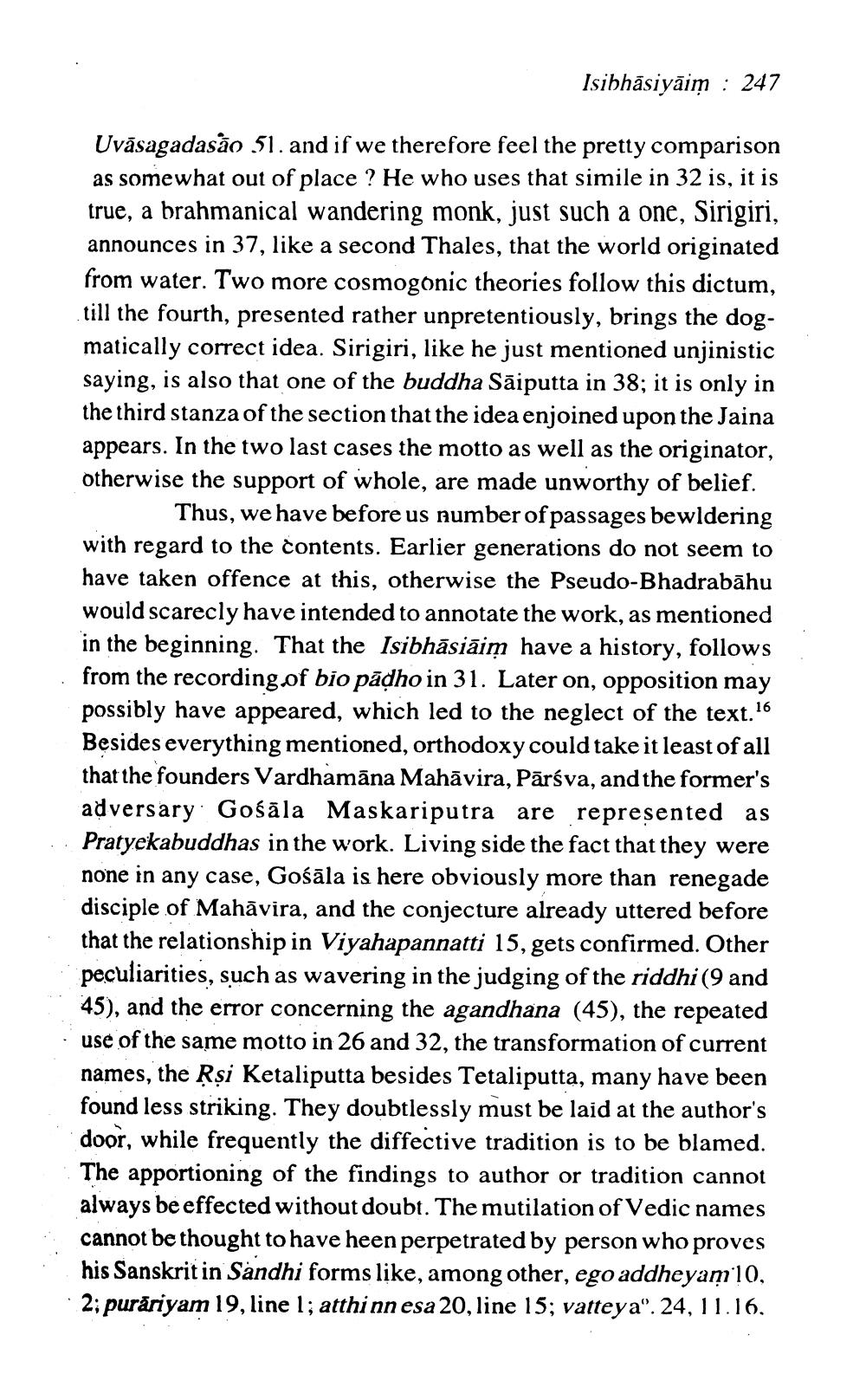________________ Isibhasiyaim : 247 Uvasagadasao 51. and if we therefore feel the pretty comparison as somewhat out of place ? He who uses that simile in 32 is, it is true, a brahmanical wandering monk, just such a one, Sirigiri, announces in 37, like a second Thales, that the world originated from water. Two more cosmogonic theories follow this dictum, till the fourth, presented rather unpretentiously, brings the dogmatically correct idea. Sirigiri, like he just mentioned unjinistic saying, is also that one of the buddha Saiputta in 38; it is only in the third stanza of the section that the idea enjoined upon the Jaina appears. In the two last cases the motto as well as the originator, otherwise the support of whole, are made unworthy of belief. Thus, we have before us number of passages bewldering with regard to the contents. Earlier generations do not seem to have taken offence at this, otherwise the Pseudo-Bhadrabahu would scarecly have intended to annotate the work, as mentioned in the beginning. That the Isibhasiaim have a history, follows from the recording of bio padho in 31. Later on, opposition may possibly have appeared, which led to the neglect of the text. 16 Besides everything mentioned, orthodoxy could take it least of all that the founders Vardhamana Mahavira, Parsva, and the former's adversary Gosala Maskariputra are represented as Pratyekabuddhas in the work. Living side the fact that they were none in any case, Gosala is here obviously more than renegade disciple of Mahavira, and the conjecture already uttered before that the relationship in Viyahapannatti 15, gets confirmed. Other peculiarities, such as wavering in the judging of the riddhi (9 and 45), and the error concerning the agandhana (45), the repeated use of the same motto in 26 and 32, the transformation of current names, the Rsi Ketaliputta besides Tetaliputta, many have been found less striking. They doubtlessly must be laid at the author's door, while frequently the diffective tradition is to be blamed. The apportioning of the findings to author or tradition cannot always be effected without doubt. The mutilation of Vedic names cannot be thought to have heen perpetrated by person who proves his Sanskrit in Sandhi forms like, among other, ego addheyam10, : 2; purariyam 19, line 1; atthi nn esa 20, line 15; vatteya". 24, 11.16.




